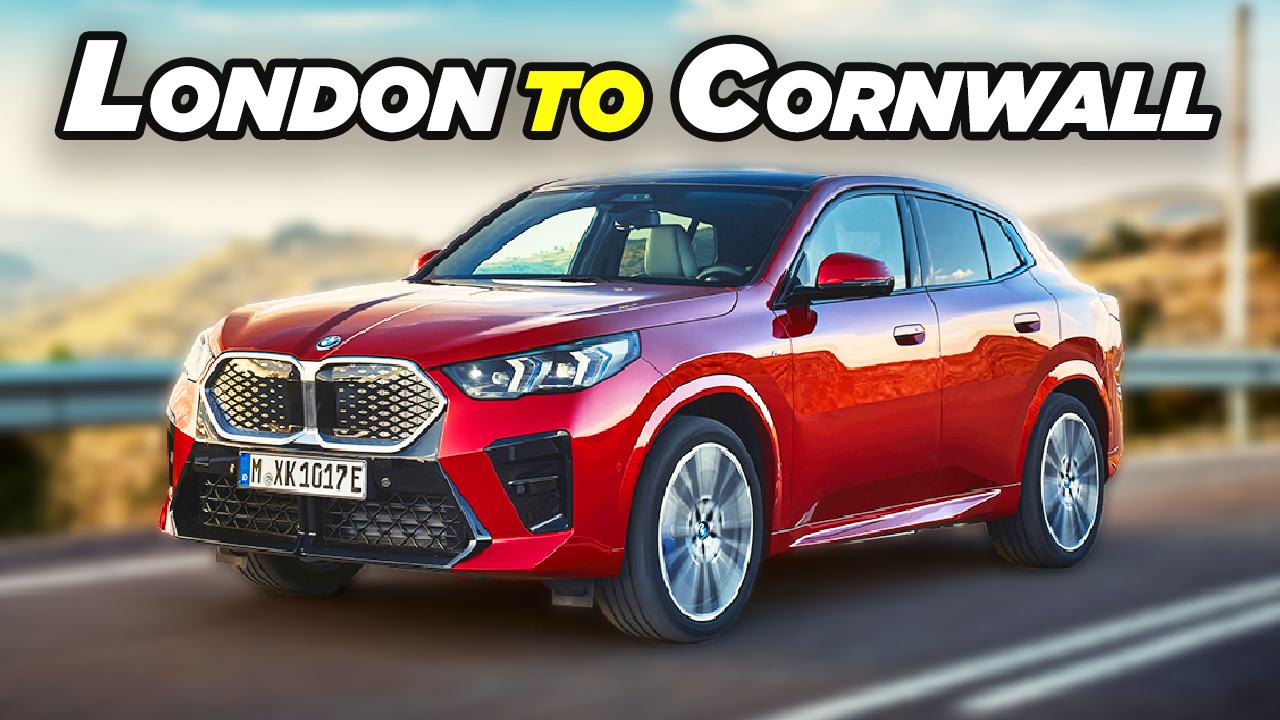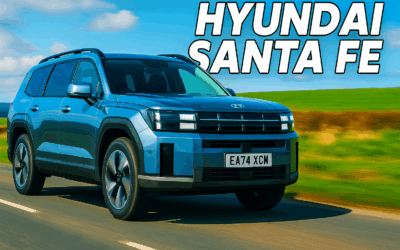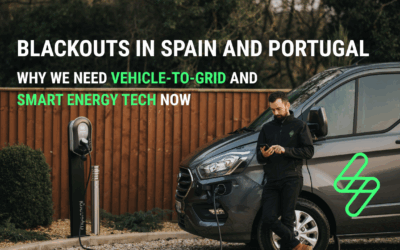If you’re planning a long journey or cautious about switching to full electric, here’s a beginners guide to driving long distance in an EV – including tips of best apps to download and advice on planning ahead.
We’ve driven all over Europe in various EVs to show just how simple it can be and electric vehicles are rapidly improving on range and charging speeds, but it can still be a daunting mission with kids and passengers relying on the “chauffeur” to get it right.
Today we’re taking you along for a trip from London to Cornwall in the all-electric BMW iX2, showcasing the joys and challenges of long-distance EV travel. Thanks to Zap-Map, Paua, myenergi and Select Car Leasing, this journey was not only easy but enjoyable, with careful planning ensuring we never missed a beat (or a charging opportunity).
Leaving London: Starting Fully Charged
Any good EV road trip begins with a full charge, and that’s where myenergi’s zappi charger comes in. Before we even hit the road, we ensured the BMW iX2 was fully juiced up using the the 7kw smart home charger. What sets the zappi apart is its ability to utilise renewable energy sources—like solar power—making sure that your charge is as green as possible. Whether you’re charging overnight on a cheap off peak tariff or taking advantage of daytime solar energy or even using battery storage – The myenergi zappi charger optimises charging efficiency, significantly lowering both costs and environmental impact.
The Journey Begins: London to Cornwall
The BMW iX2 effortlessly navigated through the busy streets of London and out onto the motorways, where its quiet, smooth ride was a standout feature. Gone were the days of noisy engines and vibration-filled road trips; the electric motor provided a serene driving experience, allowing us to relax and enjoy the countryside views as we ventured further southwest.
Charging Along the Way: Smart Tools for Smart Travel
When planning a long trip in an electric car, the key to success is planning your charging stops. Thanks to the brilliant Zap-Map app, we were able to find charging stations along the route with ease. Zap-Map is an essential app for EV drivers, providing real-time information on the locations, availability, and type of chargers, so you can plan your stops without any guesswork. With its help, we identified the best charging points on our way to Cornwall, strategically stopping for a quick top-up at fast chargers.
We also relied on the Paua card, which simplified the payment process at different charging networks. Instead of worrying about different apps or payment methods for various charging points, Paua consolidated everything into a faff free swipe of their charge card that lives in my glove box, streamlining the process and ensuring we could stay focused on the road ahead.
The Dos and Don’ts of an Electric Road Trip
To make sure your electric road trip is as smooth as ours, here are some key dos and don’ts we learned along the way.
Dos:
1. Start Fully Charged with a home charger like the zappi from myenergi.com A home charger is the most efficient way to charge an EV and zappi not only charges your car using grid electricity but can also harness solar energy. Add a libbi battery to your eco-system for even bigger long term savings. Fear not, if you don’t have a driveway, there are solutions like Kerbo Charge, Gul-e and co-charger.
2. Use Zap-Map to Plan Your Charging Stops: Map out your charging points in advance with Zap-Map. Knowing where you’ll stop to charge and how long it will take is critical to a stress-free EV road trip, especially in rural areas where chargers can be spaced further apart.
3. Simplify Charging Payments with Paua: Paua makes it easy to pay at various charging stations by consolidating different networks into one app. No more fumbling with multiple apps or RFID cards—just charge and go.
4. Take Advantage of Fast Charging: The BMW iX2 can charge from 20% to 80% in about 30 minutes at a fast charger. Plan your stops around quick snacks or rest breaks so that your car is ready to go when you are.
5. Monitor Your Driving Style: Drive in eco mode where possible to maximise efficiency. The iX2’s eco settings will help you get the most range out of each charge, which is especially useful when travelling longer distances.
Don’ts:
1.Don’t Forget to Check Your Route for Charging: Even with the iX2’s impressive range, it’s essential to plan for at least one or two charging stops on a trip this long. Use Zap-Map to make sure you’re never far from a station and check ahead to see if they’re available or in use.
2. Don’t Leave Charging to the Last Minute: It’s tempting to push your car’s range to the limit, but it’s better to charge when you still have a buffer. That way, if a charging station is out of order or busy, you won’t find yourself in a bind.
3. Don’t Forget to Factor in Weather Conditions: Cold weather can reduce your battery’s efficiency, so if you’re travelling in cooler temperatures, plan for shorter intervals between charges. Apps like Zap-Map can help you adjust your plans on the go.
4. Don’t Overpack: While the BMW iX2 is a powerful vehicle, heavier loads can reduce efficiency. Pack smart and light to ensure you’re getting the best range possible.
5. Don’t Skip Out on Solar Charging with myenergi: If you have access to solar energy at home, using myenergi’s Zappi charger to power your car is one of the most eco-friendly ways to start your trip. Not only will you reduce your carbon footprint, but you’ll also save on energy costs!
Arriving in Cornwall: The Final Stretch
As we neared Cornwall, the landscape shifted to rolling hills and coastal views, with the fresh air and winding roads offering a dramatic change from the motorways of earlier. The BMW iX2 handled the steep inclines and tight turns with ease, proving itself as a versatile and reliable companion for both city and countryside driving.
Thanks to myenergi, Zap-Map, and Paua, our journey was smooth, sustainable, and free of the typical worries associated with long-distance EV travel. We arrived in Cornwall with range to spare, confident in the knowledge that electric cars like the BMW iX2 are more than capable of making long road trips not only possible but enjoyable.
The Takeaway
This trip showed us that long-distance travel in an electric vehicle is not just a possibility, it’s the future. With tools like Zap-Map for planning, Paua for seamless charging payments, and myenergi for starting your trip fully charged with renewable energy, electric road trips are becoming easier, more sustainable, and more enjoyable than ever.
Whether you’re an experienced EV driver or thinking about making the switch, now is the time to embrace the electric revolution. The BMW iX2 is proof that you can travel far, travel smart, and travel green.
Have you ever tried an electric road trip? What tools and tips would you recommend for long-distance EV travel?
Share your experience and pics on the road to net zero and we’ll repost our favourites on twitter @ricboull @thesustainabledad on insta.
Cheers, Ric.




